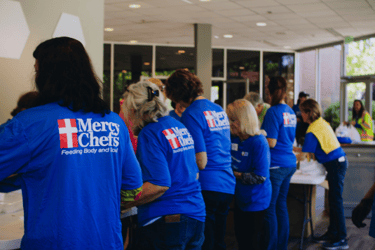Related Posts
Subscribe to Our Blog
Subscribe to receive email notifications every time we publish new insights, news, and thought leadership to our blog.
When it comes to recruitment campaigns, does a one-size-fits-all approach work best? Or is it better to target certain demographics? If so, which ones? These efforts require time and money, so of course it makes sense to make the most of it. This month, we researched statistics based on the question: “Who volunteers?” Some of the answers we found may surprise you. (The numbers cited are generalizations made by the U.S. Bureau of Labor Statistics and pertain to the year ended in September 2009.
Women led the way for volunteerism, with one in three females donating their time, up from 29.4 percent the previous year. The volunteerism rate for men has held steady for the past two years at just over 23 percent. As noted in the study, “women volunteered at a higher rate than did men across all age groups, educational levels, and other major demographic characteristics.”
Running counter to what one might think, married people are more likely to volunteer (32.3 percent) than individuals who had never married (20.6 percent) or those with another marital status (21.5 percent).
Parents with children younger than 18 had a much higher volunteerism rate than those who did not have children under 18 (34.4 percent versus 23.9 percent, respectively.) Of those with younger children, close to 50 percent of mothers and 39 percent of fathers chose to donate their time primarily for a youth service or educational group. On the flip side, volunteers who did not have children below the age of 18 were much more prone to choose volunteer opportunities with other agencies, such as community service/social organizations or hospitals.
The statistics show that, by age, those in the 35 – 44 and the 45 – 54 groups claimed the highest volunteer rates (31.5 and 30.8 percent, respectively). Least likely to volunteer were individuals in their early twenties (18.8 percent). Seniors aged 65 or older volunteered at a rate of 23.9 percent; of this demographic, almost 45 percent chose to give their time to a religious organization.
Recently, many non-profits have seen a swell of volunteers due to high unemployment rates. However, employed persons still tend to volunteer at a higher rate (29.7 percent) than those who are unemployed or not part of the labor force (approximately 22 percent each). Part-time workers volunteer more than those employed full-time, 33.7 and 28.7 percent, respectively.
A direct correlation was found between education level and volunteerism rates. Almost 43 percent of college graduates reported volunteering; this demographic tended to direct its efforts toward agencies with either a hobby, sport, or arts/cultural focus. High school graduates volunteered at a rate of approximately 19 percent, and the volunteer rate for individuals with less than a high school degree tallied at under nine percent.
Around 40 percent of volunteers said they took the steps necessary to become involved with an agency. However, another 44 percent reported volunteering after being invited to do so — the majority of the time by a person within the organization.
As you probably know, marketers in the business world have been segmenting their advertising based on a variety of demographics for many years. We hope that these statistics, along with your knowledge of the community you serve, can help bring the same focus to your next recruitment campaign.


Subscribe to receive email notifications every time we publish new insights, news, and thought leadership to our blog.